How Kyiv won the information war
Volodymyr Zelensky’s campaign to win the hearts and minds of the Western world may not save Ukraine but it will make Putin pay a higher price for his tyrannical ambitions.
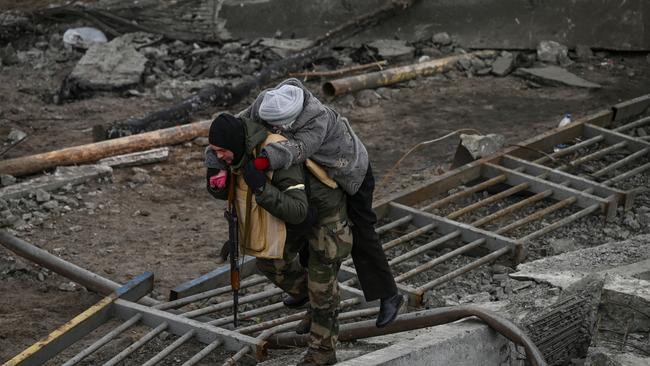
Or Ukrainian President Volodymyr Zelensky’s Churchillian-style speech to Britain’s House of Commons and the standing ovation that followed.
Or Zelensky’s brazen decision to return to his office in besieged Kyiv to address his stricken people.
Ukraine may be slowly losing the armed struggle against a vastly stronger Russian military machine but it has already delivered a stunning victory over Vladimir Putin in the information war.
Of course this battle for global hearts and minds is being made much easier by Putin himself because of his increasingly genocidal approach to the conflict, like the callous bombing of a maternity hospital in Mariupol.
But even then, within minutes of that bombing, Zelensky had retweeted vision of the grisly aftermath where bloodied pregnant women were carried out of the bombed ruins of the hospital and into the snow. “The hospitals (in Mariupol) are ruined, the schools are ruined, the churches are ruined, ordinary buildings and all the dead people, dead children,” Zelensky tweeted.
“Dropping a bomb on a maternity hospital – it’s the ultimate proof that what is happening is genocide of Ukrainians.”
The Zelensky government’s brilliant messaging about the true horror of what is unfolding there has become the X-factor in the conflict in Ukraine. It is fuelling an already fast-growing global outrage that is seriously complicating Putin’s invasion. It has helped to galvanise the Western world in a way that Putin never thought possible, resulting in the funnelling of billions of dollars of Western-funded hi-tech weapons to Ukrainian fighters as well as sanctions that were once considered unthinkable, such as Joe Biden’s decision to ban Russian oil imports to the US.
It has helped unify and reinvigorate NATO and has even injected a steely resolve into the usually toothless European Union.
Some former military and foreign policy leaders in the US and the UK are now even challenging their country’s official policy by calling for more direct US military involvement in the war such as through a limited no-fly zone in Ukraine.
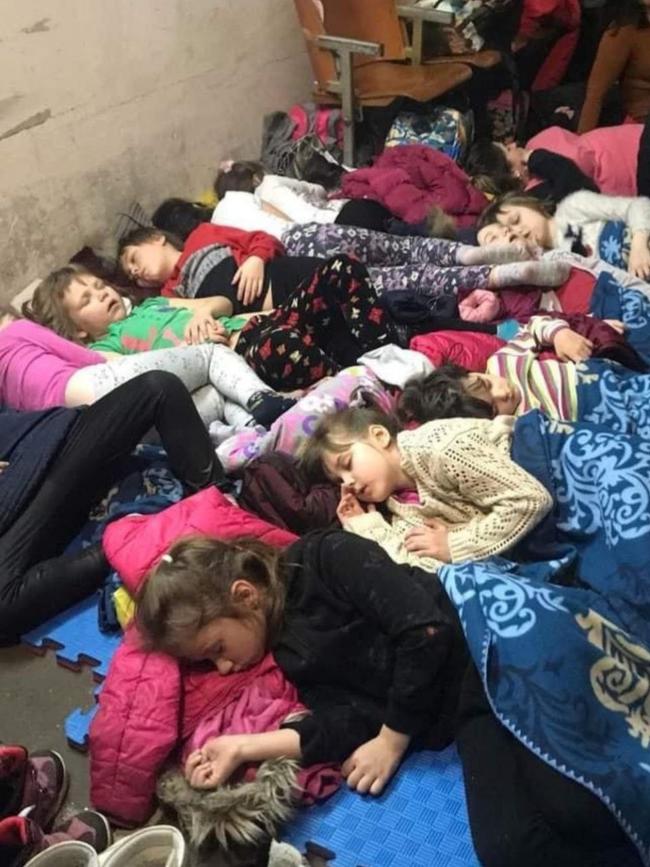
There was always going to be global fury at Putin’s unprovoked attack on Ukraine. Yet Putin has badly underestimated not only the strength of Ukraine’s military resistance, but also the strength of the West’s response. And the strength of the West’s response has been directly fuelled by the savvy information war that Ukraine has waged. Not all of this information – and at times disinformation – is the deliberate creation of the Ukraine government. Many videos, photos and stories have been posted on social media by ordinary Ukrainians, but the government in Kyiv has promoted them vigorously to bolster its pleas for more Western military aid.
Some of them have turned out to be false, like the reports of the deaths of the 13 defenders of Snake Island after they courageously told a Russian warship to “go f..k yourself” and also the tale of the so-called “Ghost of Kyiv” fighter pilot credited with shooting down six Russian planes.
But there have been numerous examples of real personal bravery by ordinary Ukrainians and these have been eagerly shared on social media by a world that desperately wants Ukraine to survive this David and Goliath struggle.
At the centre of this has been Zelensky himself, whose savvy use of social media to highlight his genuine courage in fighting alongside his people has seen him transformed into a Mandela-like figure in the eyes of the West.
Zelensky’s personal video calls to the US congress, Britain’s House of Commons and to leaders like Scott Morrison have directly impacted on Putin by hardening the West’s response to Russia.
In these calls, Zelensky often says “this may be the last time you see me alive” to underline the desperate position that he and his fellow countrymen are now in.
In the case of Zelensky, his claims are no exaggeration. His likely fate in any successful Russian invasion appears to be death or life in a Russian jail. Sadly, Zelensky’s battle for hearts and minds around the world has been helped by a brutal and cruel change in Putin’s tactics which saw him openly target civilians in besieged cities across Ukraine. Having failed in his bid to quickly capture the cities of Kyiv, Kharkiv and Sumy in the north and Mariupol in the south, Putin has turned his guns deliberately on ordinary Ukrainians, including women and children, as they seek to escape the fighting.
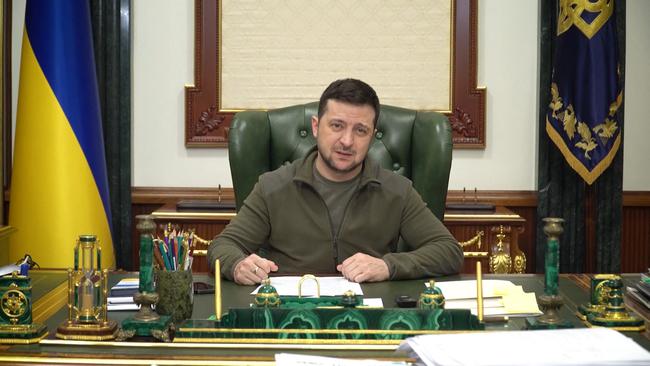
The result has been a horrific slaughter of civilians amid scenes which are hard to reconcile with modern Europe. The UN says at least 516 civilians have died in Ukraine so far, but Ukraine authorities say the figure is already in the many thousands. No city has suffered more than the besieged port city of Mariupol, where some 400,000 residents have had no power, water supplies, phone reception or fresh food for more than a week. Unburied bodies lie in the street and mayor Vadim Boychenko claims that children in the city have started to die from dehydration. Even before the attack on the maternity hospital, Boychenko said at least 1300 civilians had been killed as videos showed bodies being thrown into mass graves.
“Something that we thought was impossible in the 21st century is happening. It’s frightening news for Europe, and a frightening reality for Ukraine,” Boychenko said.
The World Health Organisation has now verified at least 18 attacks on Ukrainian health facilities and workers across the country.
The question now is how far will Putin’s attacks on civilians go? Will he seek to take Ukraine’s major cities by force or simply bomb them and starve them until they surrender?
The situation in Ukrainian cities in the war zones in the north and south of the country is now becoming dire with whole populations lacking power, heat and water and facing relentless bombardment.
In the capital Kyiv, a city of three million people, officials say the city is less than a week away from a full-blown humanitarian crisis.
Efforts so far by Ukraine to get Russia to agree to a ceasefire to allow safe passage for civilians out of besieged cities have been fraught. In Mariupol and elsewhere, Russian forces have sometimes shelled evacuation routes being used by civilians. In other cities, Moscow has only agreed to evacuation routes that force refugees to walk towards Russia or its ally Belarus.
Escape routes from battered cities are now subject to day-to-day negotiations between local Russian and Ukraine commanders. Some families are getting out but many more remain trapped in cities that are being shelled relentlessly. Ultimately, the success of these humanitarian corridors will depend on Putin. A humanitarian refugee crisis of historic proportions is now unfolding with more than two million Ukrainians, half of them children, having fled across the country’s western border, mostly to Poland.

As outrage grows over Putin’s attacks on civilians, the Western media is becoming increasingly graphic in its reports about what is unfolding in the country. The New York Times shocked many when it placed a harrowing photo across its front page of the bodies of a mother and her two children who were gunned down by Russian troops on a bridge outside Kyiv. The Times defended its graphic coverage saying: “We believe it is important to give our readers a clear picture of the horror of an attack like this. This includes showing pictures that are not sensationalised but that give a real sense of the situation.”
Putin has rarely had his dirty work exposed like this on the front page of major Western newspapers – his military campaigns in Chechnya and Syria were far less visible – and this has only served to further galvanise the West’s unified response to his aggression. In just two weeks of conflict, Russia has become the most sanctioned nation in the world, exceeding North Korea, Iran and Syria. The most eye-popping of these came this week with Biden’s decision to ban Russian oil and other energy imports from Russia, a move that will increase gas prices in the US.
Biden had previously baulked at taking such a move, which could ultimately rebound on him electorally, but he judged that public outrage against Russia, which provides 8 per cent of US oil, was strong enough to justify it.
“I said defending freedom is going to cost. It is going to cost us as well in the United States,” the President said, while warning of gas price increases.
Britain, which accounts for 2 per cent of Russian oil imports, also banned Russian oil while the European Union, which is far more dependent on Russian energy, said it would cut Russian imports by two-thirds within a year but is now under pressure to do more.
Biden’s move to cut off Russian oil was backed by a solid 79 per cent of people according to a Wall Street Journal poll, a sign of how the Ukraine conflict is tugging at the hearts of Americans. Biden’s handling of the Ukraine crisis has also helped restore his own flagging fortunes as president, with polls showing the majority of Americans – 52 per cent – approving of how he is handling the Ukraine crisis compared with just 34 per cent last week.
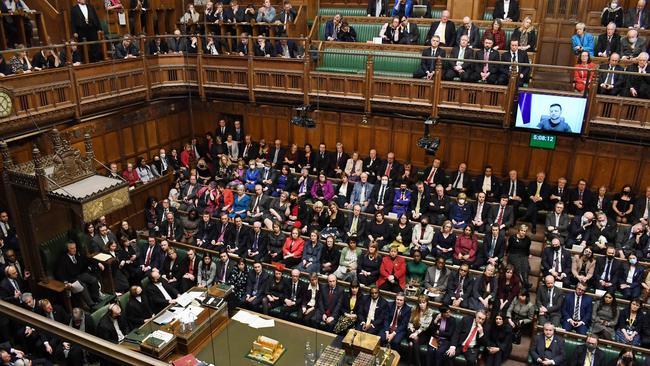
The rapid emergence of Putin’s Russia as a global pariah was underlined by this week’s move by US corporate giants McDonald’s, Starbucks and Coca-Cola to suspend their operations in Russia. Energy giant Shell also joined ExxonMobil and BP in suspending its operations in Russia while other global companies including Sony, Nestle, Carlsberg, Heineken, Microsoft and Ferrari also turned their backs on the Russian market. Back in Washington, congress chose to almost double the proposed aid package to Ukraine from $US14bn, compared with the $US6.4bn package initially proposed by Biden. US intelligence chiefs also agreed to provide more real-time intelligence to the Ukraine military to help it learn of planned Russian troop movements and attacks. In Europe, the anger towards Putin has further boosted the supply of weapons and other military supplies to Ukraine, with convoys of military trucks filled with weapons now snaking each day into western Ukraine to arm the resistance. Countries that would never normally be a part of such operations – including Sweden, Germany, Italy and Spain – are among those that have now pledged everything from howitzers and anti-tank and anti-aircraft weapons to grenade launchers.
In this current atmosphere of outrage towards Putin, Biden and Europe are under pressure to do more on Ukraine. They are walking an increasingly fine line between military aid to Ukraine and direct military involvement.
Biden remains adamant that the US will not become a combatant in Ukraine which is why the White House has backed away from a proposal that Polish MiG-29 fighters be given to Ukrainian pilots to help defend their country. But the White House believes the spectacle of the US openly delivering the fighter jets to Ukrainian pilots could easily see the US and NATO becoming engaged in the conflict.
Still, with casualties rising every day in Ukraine, some senior military and foreign policy figures say a more aggressive approach is now needed. A former senior military chief General Sir Chris Deverell this week said a no-fly zone over Ukraine could be necessary as the West faces the choice of fighting Putin now or later.
“I have been against the imposition of a no-fly zone by NATO in Ukraine, believing that it would surely escalate the conflict. But Putin seems hellbent on escalation. So the question is becoming: does NATO fight him now or fight him later?” he said.
Meanwhile in the US, a letter signed by more than two dozen of the nation’s top foreign policy minds called for a partial no-fly zone over Ukraine. The letter, signed by former US ambassadors to NATO and Ukraine and former Supreme Allied Commanders, and undersecretaries of defence and the state department, said a no-fly zone should be created but only to protect agreed humanitarian corridors.
“NATO leaders should convey to Russian officials that they do not seek direct confrontation with Russian forces, but they must also make clear that they will not countenance Russian attacks on civilian areas,” the letter said. So far there has been no hint of a change of policy from Biden, who has warned that a no-fly zone could trigger conflict between NATO and Russia.
Putin has said that any nation participating in a no-fly zone would be seen by Moscow as “participants of the military conflict.
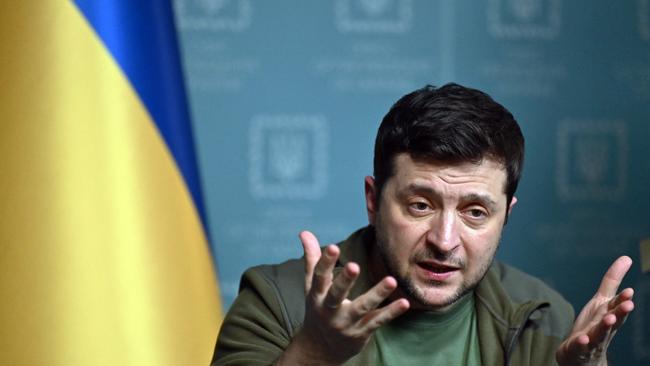
While Zelensky has clearly won the global information war on Ukraine, Putin is busy fighting his own information war within Russia. He has shut down any media outlets that question his invasion or even report on it factually.
As a result, Russian television this week showed the country’s troops participating in a mostly bloodless “special military operation”. It showed Russian troops helping civilians to safety rather than bombing them.
Victoria Nuland, the US State Department’s undersecretary of State for Political Affairs, says Putin’s survival will depend on his ability to maintain this fiction to his own people.
She says the war will end “when Putin realises that this adventure has put his own leadership standing at risk, with his own military, with his own people, that he is haemorrhaging the lives of the people of Russia, the army of Russia and their future to his own vain ambition.” Then, Putin “will have to change course, or the Russian people take matters into their own hands”.
At this grim moment of the Ukraine conflict, with Putin showing no signs of curbing his attacks on civilians, this prediction seems like wishful thinking.
But Zelensky’s campaign to win the hearts and minds of the Western world has directly hurt Putin. It may not save Ukraine but it will make Putin pay a far higher price for his tyrannical ambitions.






If you were following the war in Ukraine this week it was hard to miss the heart-wrenching video of the little girl singing Frozen’s Let It Go in a Kyiv bomb shelter. Or the picture of the row of empty prams donated by Polish mothers at their local railway station ahead of the arrival of Ukrainian refugees.